Book Reveiw by Pete Vack
Photos by Xavier de Nombel
“…I know it when I see it…”
The lack of a formal definition of the automotive term, Berlinetta* allows us to expand, contract and contradict the word as we see fit. Just what is a ‘Berlinetta?’ Of course I know, and you know. Isn’t it a beautiful, tight, Italian short-wheelbase-two-door-coupe with two bucket seats butted up to a spare tire, suitcase or gas tank?
Or maybe it’s a little bit more, perhaps a civilized car with a jump seat for kids or a bag of groceries. But this somehow subverts the idea of a Berlinetta, which sounds pretty romantic. Where do we draw the line? Not so simple after all. So how do we define ‘Berlinetta,’ a word coined in the 1930s, which is not really in any dictionary aside from the gearhead guide to the universe as they see it. I don’t know, so to paraphrase Justice Stewart, who wrote about pornography, “I shall not today attempt further to define the kinds of material I understand to be embraced within that shorthand description; and perhaps I could never succeed in intelligibly doing so. But I know it when I see it…”1
In their second volume of hot Italian coupes, (Berlinettas ‘50s was the first), author Christian Descombes and photographer Xavier de Nombel are as unsure of the definition of a Berlinetta as the poor Supreme Court Justice Stewart is by pornography. I would never have thought of the Lancia Flaminina Coupe as a Berlinetta, but that’s just my perspective. Which makes of course for a more interesting book and something to argue about.
The Introduction is a chapter by the man himself, Giorgetto Giugiaro. Can’t do better than that. He is not asked to define a Berlinetta, but instead gives us a much more interesting overview of the evolution of custom Italian car design and production, from a few limited show cars to a small production line, to eventually becoming a design only studio but with the ability to attract automotive clients from all over the world. And no one knows the terrain better than Giugiaro. He also discusses many of his most famous designs while an unexpected surprise is a series of Giugiaro color sketches on an opaque onion skin paper that depict the Bertone Maserati 5000, the Corvair Testudo, Alfa Canguro, and the Bizzarrini Manta. Worth cutting and framing!
As we wrote in our review of the first volume, the photography is stunning. The ability of the talented Xavier de Nombel to photograph the cars at a variety of locations with plenty of time and space creates a series of photographs that are very difficult to better. Nombel could make the Lancia Appia look good and does. The author is Christian Descombes, who was a key member of the French magazine Automobiles Classiques for 25 years, making him well=qualified on the subject. The translation is excellent, as is the proofing. In fact, we only noted one mistake; Italian cinema director Ettore Scola is misspelled as Solo. But the overall quality rates four stars out of four.
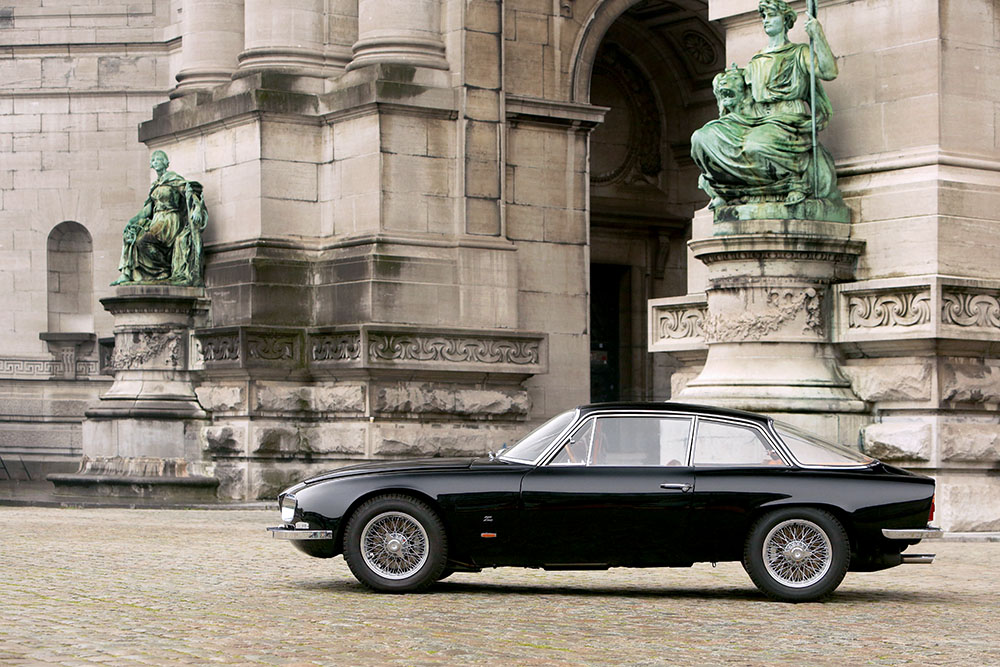
Black paint, wire wheels and de Nombel make the Alfa SZ look good, but Spada got up on the wrong side of the bed that day.
As before, the overall topic of Berlinettas is organized by categories that are serviceable if not logical. “Fresh Ambitions” include new attempts to build nice cars in a rapidly changing industrial environment. Ferrari passes the “Ferrarini” to newcomer ASA and the ASA 1000 GT is born; Frank Reisner finds funding to produce the Apollo Buick GT; ex-Ferrari engineers toss out the ATS 2500 GT, while newbies Lamborghini, De Tomaso and Iso get into the game. Here the Lamborghini 400 GT 2+2 comes into play, expanding that loose definition of Berlinetta.
One could argue that all the cars in the book are limited series, but the next section targets some very interesting limited series Berlinettas for our perusal. It begins with the Lancia Flaminia Coupe Pininfarina, and rolls out the Lancia Flavia Zagato, Osca coupes, and Fiat and Abarth rarities. It also includes the Alfa 2600 SZ, rarer than pretty at only 105 cars built.
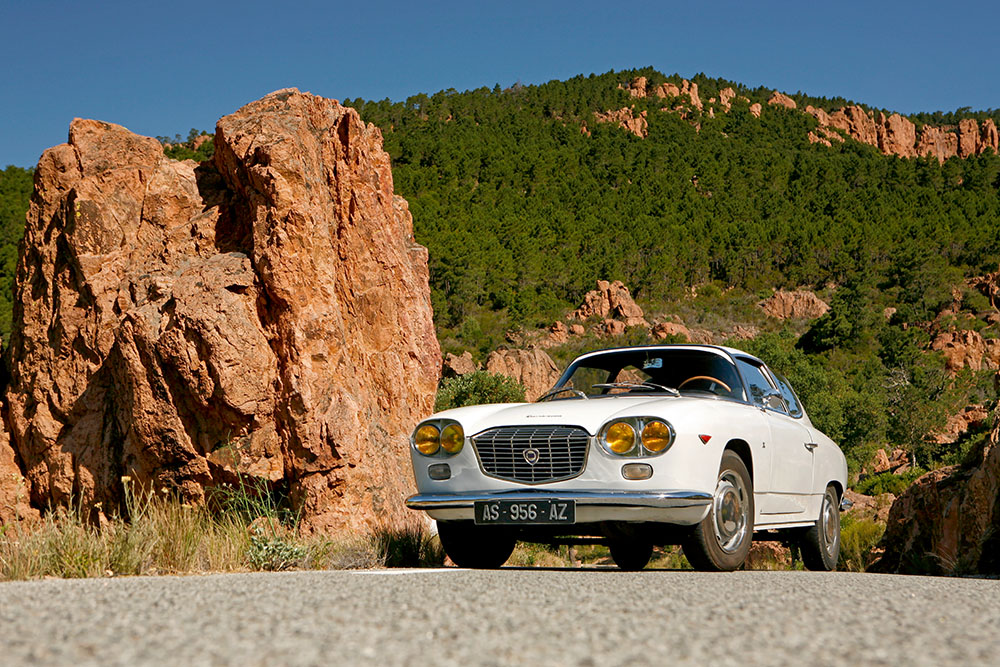
Another design from Ercole Spada that was from the moon but didn’t go anywhere. The electric rear window was a nice touch.
The next section is entitled Sports Cars and features the Ferrari 250GT SWB, OSCA 1600 GT, Alfa TZ, Abarth 1300 OT and Abarth Lombardi Scorpion. The Lancia Appia Zagato fits in here but just barely. Perhaps what the author meant was not sports car but dual-purpose GT car.
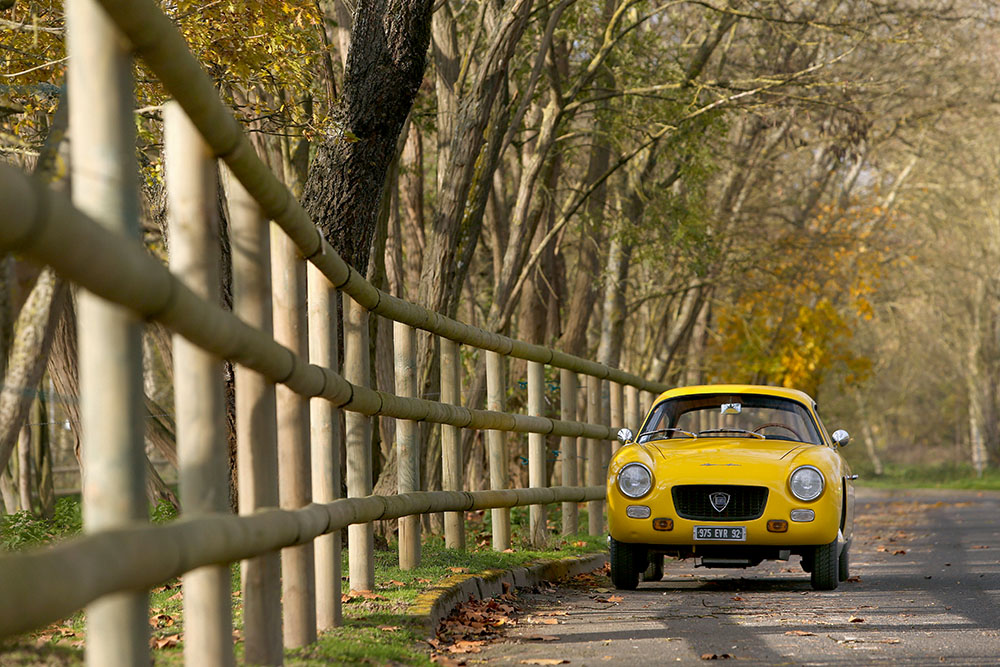
Ok, last of my unfavorites. After I bought one that needed restoration, I stared at it for a long time and then asked why.
Supercars heads the next section and includes the big Maserati 5000 GTs, the Ghibli, Bizzarrini Strada, Mangusta and Alfa T33 Stradale.
The last category is Concept Cars, the one-off show specials which are also Berlinettas, i.e., the Ferrari Bertone, Alfa 2600 Coupe by Pininfarina, Chevy Testudo, Lambo Marzal, Bizzarrini Manta, and two Alfa T33 concept cars.
So, what is missing? One is not supposed to ask that question, but somehow it creeps in as one pages though the book and the mind races to find the Ferrari GTO, the Alfa 1600 GT, the Lancia Flaminia Zagato, Maserati 3500 GT, Fiat-OSCA 1600 Coupe; oh, you know that can lead to endless queries. Be thankful for the selections that were made, for they are good. Again, as we noted about the first volume, Descombes writes accurately and entertainingly, but the profiles are not particularly car specific. He rambles out generic history germane to the subject, which for most readers will be redundant.
My unfavorites, all of which I once owned and can testify thusly: The Alfa 2600 SZ was an ugly beast, lacking the light, joyful handling of its smaller sisters. The Appia Zagato was long and narrow and the V4 was never destined to power a GT car, although Toly Arutonoff seemed to happily race one; similarly the Flavia Zagato was a heavy steering sedan wrapped in an aluminum confection that was so decidedly different it left onlookers in shock.
My favorite Berlinetta in the book is the OSCA 1600 GT by Touring. Rarely seen, the book presents one of the two (according to Orsini/Zagari’s OSCA) Touring coupes built on the 1600 GT OSCA chassis. The author agrees…it was probably the most elegant of the last six OSCA GT cars, if not the most refined. A large greenhouse does not detract from the smooth, well balanced lines of the body. Inside, perforated steel was used to accent and support the headliner and seats. All OSCA coupes are great looking cars, some 98 by Zagato, 24 by Fissore, 3 by Boneschi 2 by Touring and one, the mystery OSCA, by Morelli (link).
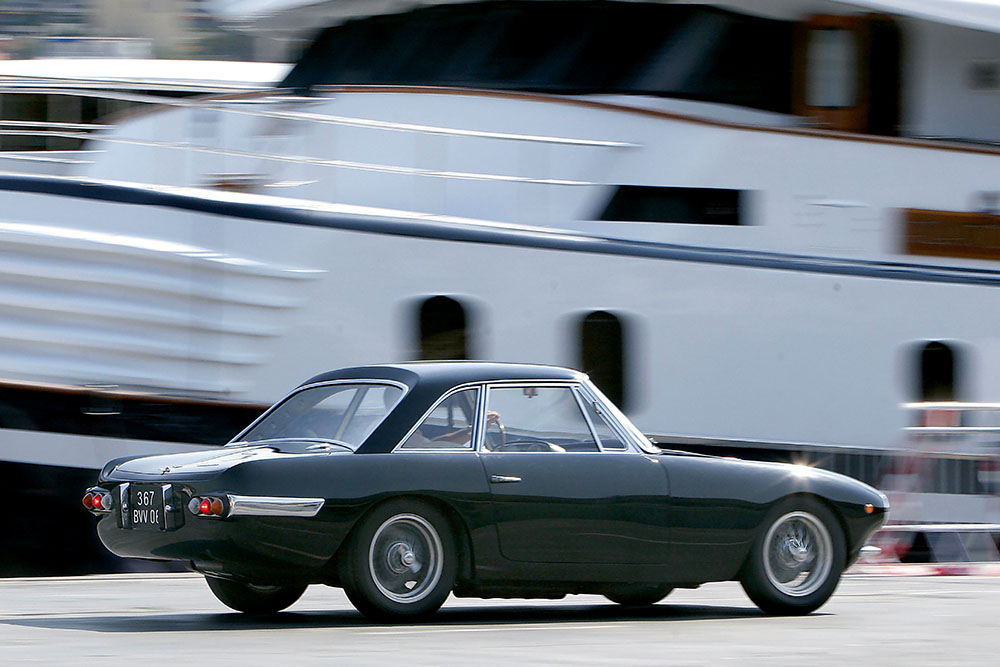
My favorite from the book…not a tight little coupe, too much overhang, but so elegantly conceived and executed.
So, a vast array of two-door coupes, each lovely in its own way. But they have approached the 1969 threshold, crossing into the world of corporate design, a world where the majority of the coachbuilders who conceived the Berlinetta no longer exist. Will they continue in the same vein with Berlinetta ‘70s? and ‘80s? And on? Or is the term Berlinetta only truly applicable to the postwar era which ended in the 1970s? But is not a La Ferrari a true Berlinetta? Well thank goodness for latitude.
_______________________________
*The word Berlinetta, unlike the stem word Berlina, meaning sedan, does not appear in any dictionaries, Italian or English. According to Wiki, the word was coined in the 1930s and means, simply, ‘little sedan or saloon.’ The diminutive of Berlina works so well, particularly when spoken, that this term has achieved great status in the automotive lexicon.
But only in certain cases. The French rarely use the term, although it has been appropriately applied to the Alpine A 110 in the French guise as ‘berlinette.’ I can’t recall a Porsche Berlinetta or Mercedes Berlinetta; the Germans love spiders and spyders but seem averse to the use of Berlinetta. Across the Channel, Lotus, Jaguar or Aston Martin coupes never seemed to be called Berlinettas, even loosely. That leaves the Americans, who came up with the heresy of the Camaro Berlinetta from 1979 to 1986. The Italians seem to have hegemony with the term.
1 refering to the obscenity case, Jacobellis v. Ohio, 378 U.S. 184 (1964)
The most famous opinion from Jacobellis, however, was Justice Potter Stewart’s concurrence, holding that the Constitution protected all obscenity except “hard-core pornography”. He wrote, “I shall not today attempt further to define the kinds of material I understand to be embraced within that shorthand description; and perhaps I could never succeed in intelligibly doing so. But I know it when I see it, and the motion picture involved in this case is not that.”
Berlinetta ‘60s
Exceptional Italian Coupes of the Sixties
By Christian Descombes
Color Photography by Xavier de Nombel
Hard cover with dust jacket and slip case
225mm x 300mm
320 pages
442 color photographs
ISBN 979-10-90267-42-8
Published 2018 by Dalton Watson
Price: $95.00
You’ll earn 12 points
Shipping Costs: FREE SHIPPING TO USA AND UK.
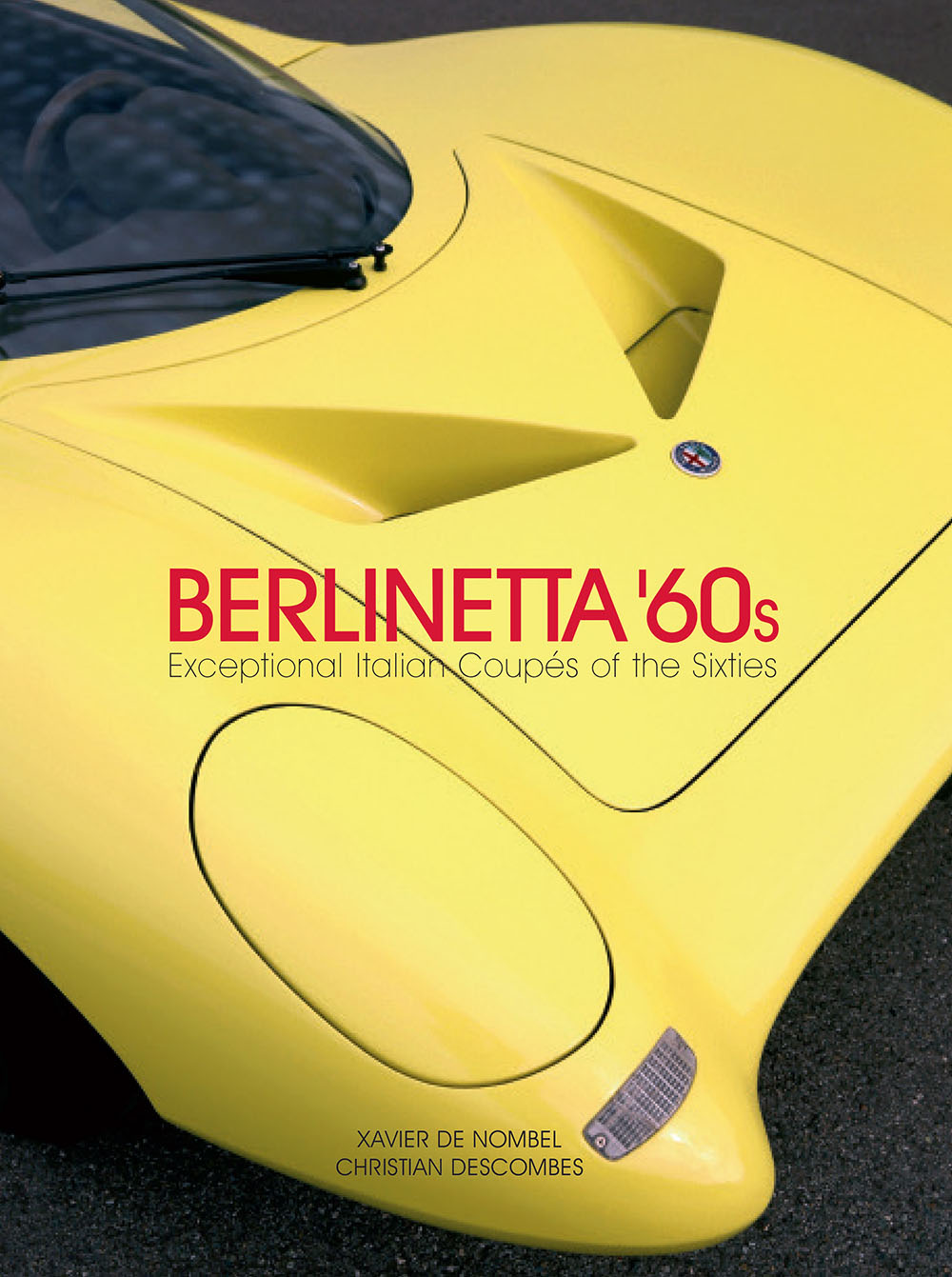
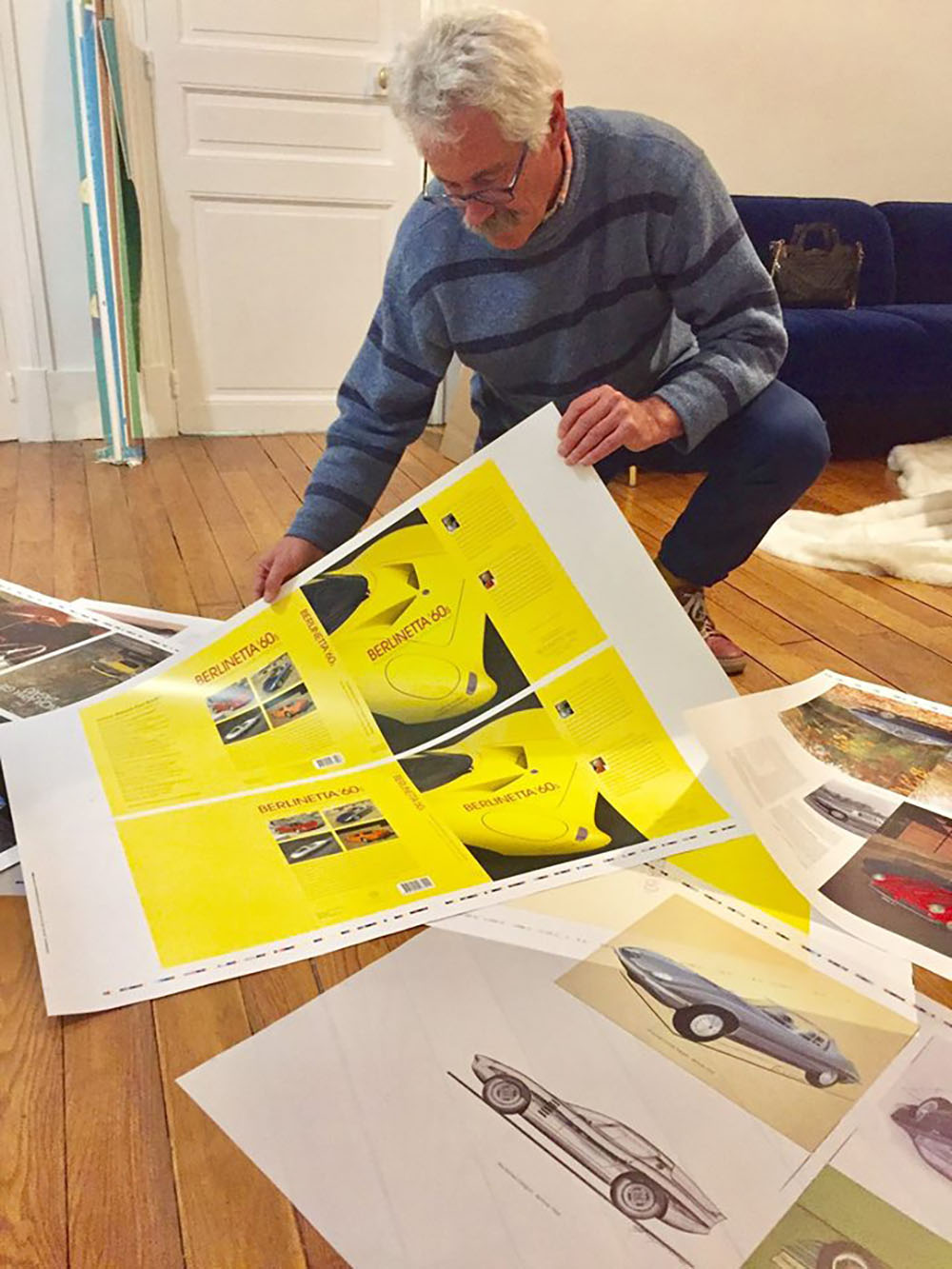
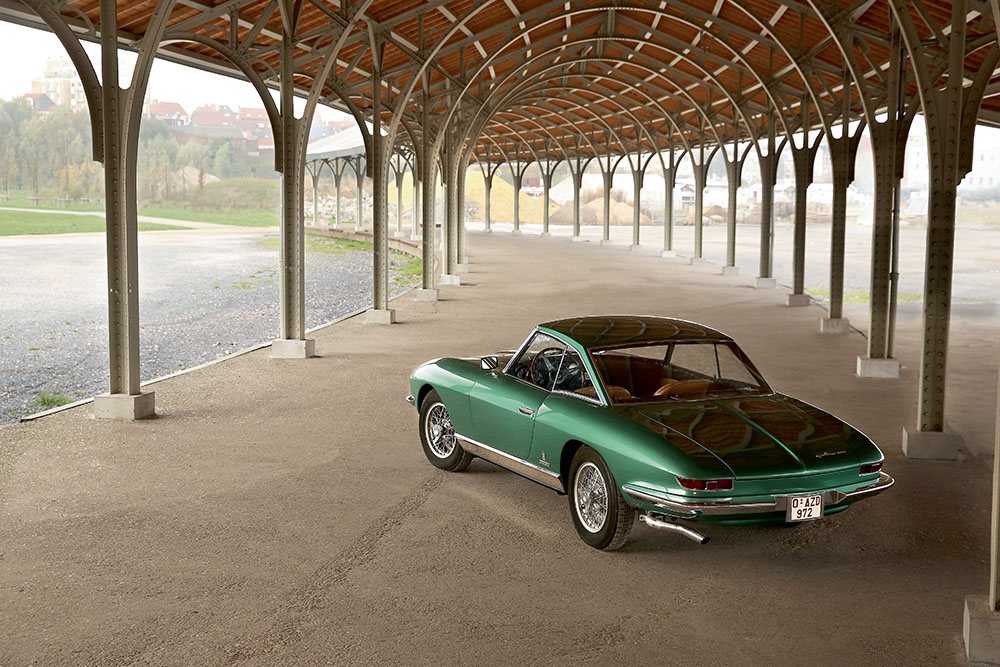
Probably a book, if the print run is low, will appreciate with time.
I agree with your comments – the photography is quite superb and “He rambles out generic history germane to the subject, which for most readers will be redundant” this all to the extent that I became fed up with what I viewed as being irrelevant waffle. Then I guess it must be conceded, I did not buy the book to learn more about the mechanicals of these cars, rather to enjoy fabulous pictures. Yes, I also would have liked to see my 1963 Fiat OSCA 1600S by Fissore, but I can’t have everything.
Very nicely worded and concise observations on the word… It is a delightful word Berlinetta… that has something swoosh about it… I may add to a possible definition ‘ Snug fit’, which I believe modern car design has lost out to some classic cars; such as the Daytona… compared to a more too bulging Ferrari 599.